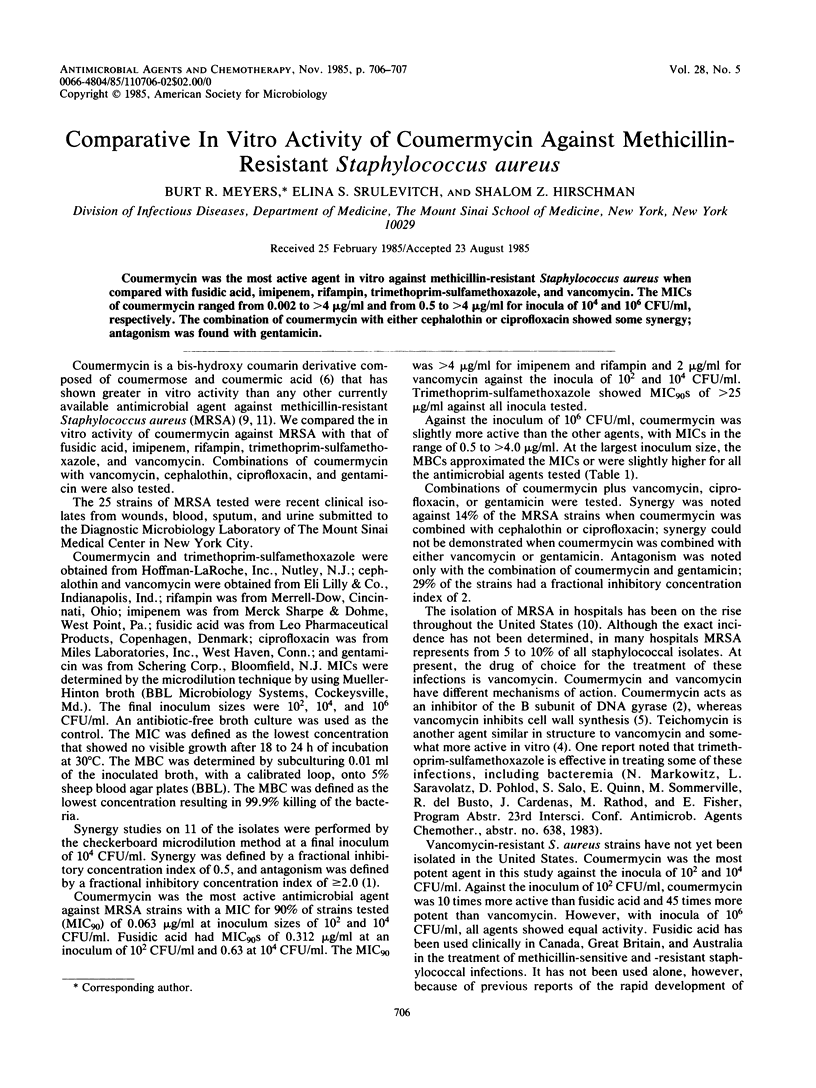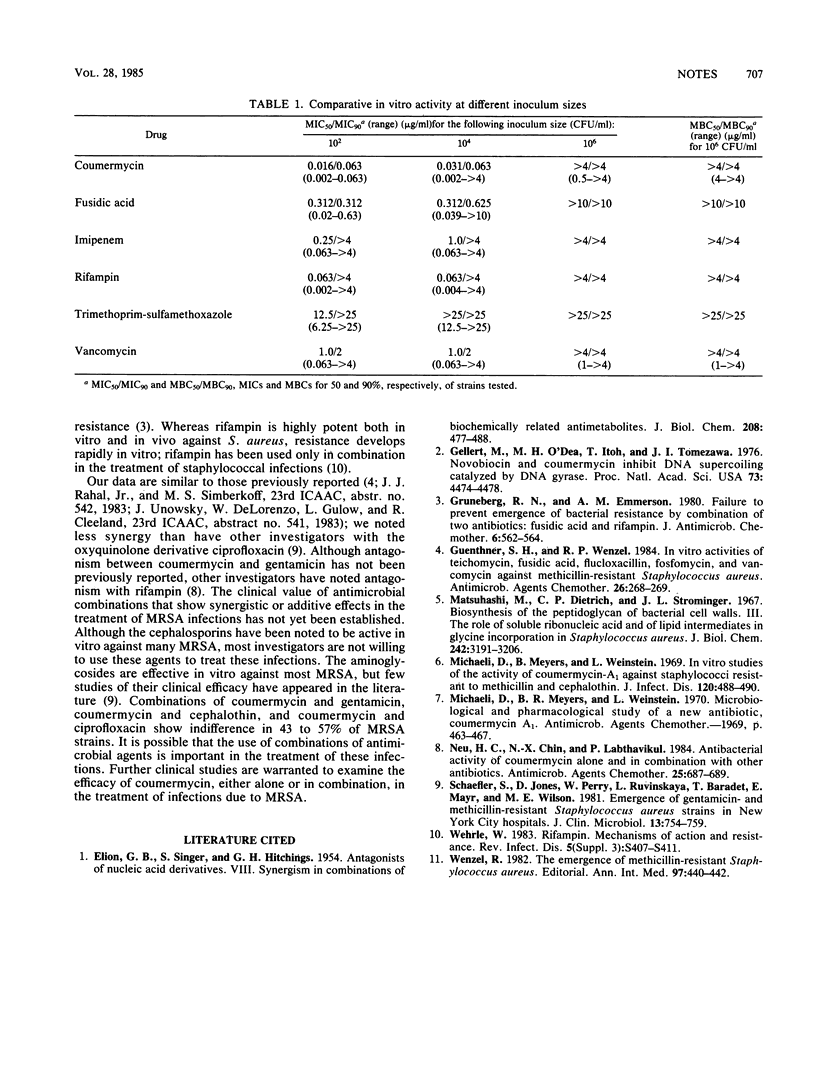Abstract
Coumermycin was the most active agent in vitro against methicillin-resistant Staphylococcus aureus when compared with fusidic acid, imipenem, rifampin, trimethoprim-sulfamethoxazole, and vancomycin. The MICs of coumermycin ranged from 0.002 to greater than 4 micrograms/ml and from 0.5 to greater than 4 micrograms/ml for inocula of 10(4) and 10(6) CFU/ml, respectively. The combination of coumermycin with either cephalothin or ciprofloxacin showed some synergy; antagonism was found with gentamicin.
Full text
PDF

Selected References
These references are in PubMed. This may not be the complete list of references from this article.
- ELION G. B., SINGER S., HITCHINGS G. H. Antagonists of nucleic acid derivatives. VIII. Synergism in combinations of biochemically related antimetabolites. J Biol Chem. 1954 Jun;208(2):477–488. [PubMed] [Google Scholar]
- Gellert M., O'Dea M. H., Itoh T., Tomizawa J. Novobiocin and coumermycin inhibit DNA supercoiling catalyzed by DNA gyrase. Proc Natl Acad Sci U S A. 1976 Dec;73(12):4474–4478. doi: 10.1073/pnas.73.12.4474. [DOI] [PMC free article] [PubMed] [Google Scholar]
- Grüneberg R. N., Emmerson A. M. Failure to prevent emergence of bacterial resistance by combination of two antibiotics: fusidic acid and rifampicin. J Antimicrob Chemother. 1980 Jul;6(4):562–564. doi: 10.1093/jac/6.4.562. [DOI] [PubMed] [Google Scholar]
- Guenthner S. H., Wenzel R. P. In vitro activities of teichomycin, fusidic acid, flucloxacillin, fosfomycin, and vancomycin against methicillin-resistant Staphylococcus aureus. Antimicrob Agents Chemother. 1984 Aug;26(2):268–269. doi: 10.1128/aac.26.2.268. [DOI] [PMC free article] [PubMed] [Google Scholar]
- Michaeli D., Meyers B. R., Weinstein L. Microbiological and pharmacological study of a new antibiotics, coumermycin A1. Antimicrob Agents Chemother (Bethesda) 1969;9:463–467. [PubMed] [Google Scholar]
- Michaeli D., Meyers B., Weinstein L. In vitro studies of the activity of coumermycin-A1 against staphylococci resistant to methicillin and cephalothin. J Infect Dis. 1969 Oct;120(4):488–490. doi: 10.1093/infdis/120.4.488. [DOI] [PubMed] [Google Scholar]
- Neu H. C., Chin N. X., Labthavikul P. Antibacterial activity of coumermycin alone and in combination with other antibiotics. Antimicrob Agents Chemother. 1984 Jun;25(6):687–689. doi: 10.1128/aac.25.6.687. [DOI] [PMC free article] [PubMed] [Google Scholar]
- Schaefler S., Jones D., Perry W., Ruvinskaya L., Baradet T., Mayr E., Wilson M. E. Emergence of gentamicin- and methicillin-resistant Staphylococcus aureus strains in New York City hospitals. J Clin Microbiol. 1981 Apr;13(4):754–759. doi: 10.1128/jcm.13.4.754-759.1981. [DOI] [PMC free article] [PubMed] [Google Scholar]
- Wehrli W. Rifampin: mechanisms of action and resistance. Rev Infect Dis. 1983 Jul-Aug;5 (Suppl 3):S407–S411. doi: 10.1093/clinids/5.supplement_3.s407. [DOI] [PubMed] [Google Scholar]
- Wenzel R. P. The emergence of methicillin-resistant Staphylococcus aureus. Ann Intern Med. 1982 Sep;97(3):440–442. doi: 10.7326/0003-4819-97-3-440. [DOI] [PubMed] [Google Scholar]


